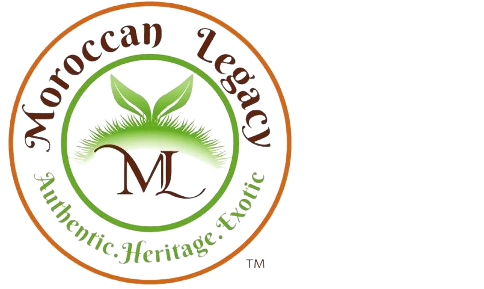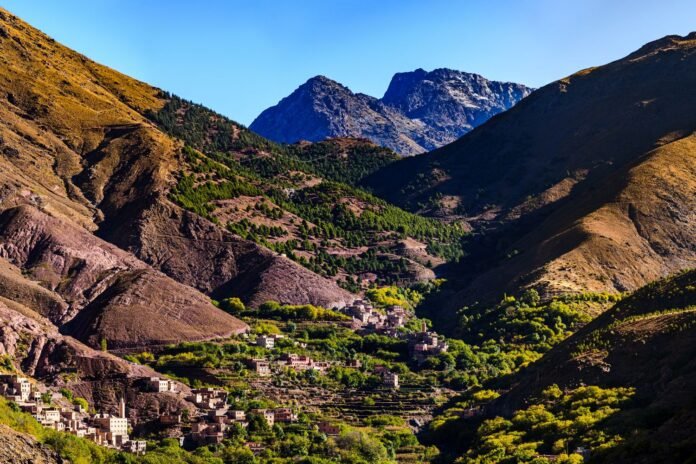Introduction
Greetings friends! I hope you’re all having a wonderful day. I wanted to share an interesting topic I’ve been researching lately – the Atlas Mountains of Morocco. As someone who cares deeply about protecting our natural wonders and biodiversity, I find the Atlas range fascinating from an ecological perspective. Let me tell you about this mountain chain and its critical role in Morocco’s climate and wildlife.
A Natural Barrier and Biosphere
Stretching nearly the entire northern coast of Africa, the Atlas Mountains form a formidable natural barrier that separates the Mediterranean coast from the Saharan interior. Covered in dense coniferous and broadleaf forests, the Atlas range provides habitat for countless plant and animal species found nowhere else on Earth. UNESCO recognizes the ecological importance of this region, designating over 23 protected areas along the Atlas as UNESCO Biosphere Reserves that preserve biodiversity while supporting sustainable development.
With peaks rising to over 13,671 feet at Jebel Toubkal, North Africa’s highest point, the Atlas Mountains create a rain shadow effect that shapes Morocco’s varied climate zones. Areas to the north and along the coastal regions receive moderate Mediterranean-like rainfall, while the southern slopes transition to semi-arid conditions resembling the Sahara Desert just over the peaks. This climate barrier function makes the Atlas a refuge for plant and animal species at the northern limits of their tropical and Saharan ranges.
Diverse Landscapes Harbor Rare Wildlife
Traversing the Atlas, one encounters fantastic landscape diversity, from dense cedar and fir forests to alpine meadows and rocky desert crags. This creates microclimates, allowing zones to support plants and wildlife, usually separated by thousands of miles. Some famous flagship species calling these mountains home include the Barbary macaque, Moroccan juniper, Atlas bear, and hundreds of endemic plant species only found here and nowhere else.
The Barbary macaque is a rare nonhuman primate whose only wild populations exist in Morocco’s Middle Atlas and Rif mountains. Considered holy in Moroccan culture, these intelligent monkeys once ranged throughout Northern Africa and the Iberian Peninsula. Deforestation has isolated them to just a few pockets in the Atlas, where they continue to adapt to changes in available habitat and food sources. Conservation projects aim to protect remaining macaque troops and their forests amid increasing human development pressures.
Another iconic Atlas species facing threats is the elusive Atlas bear, North Africa’s largest terrestrial carnivore. Only a few hundred are believed to survive in the remote cedar and fir forests of the Middle and High Atlas. As conflict intensifies between bears and shepherds over grazing lands, this magnificent predator is in danger of disappearing without urgent action. Researchers are tracking bears using GPS collars to understand better their movements and habitat needs for designing protected areas.
Morocco’s juniper species are one of its true botanical treasures endemic to the Atlas Mountains and nowhere else on Earth. Junipers have cultivated deep significance as medicinal plants and sources of aromatic oils in Moroccan culture and terroir. The majestic stands of ancient junipers scattered across the Atlas are strongholds of biodiversity, providing nesting cover for birds of prey and habitat for endangered animal species like the Barbary deer and stone marten. Much work remains to be done conserving relict juniper forests threatened by logging, overgrazing, and climate pressures.
Studying the Atlas’ Indigenous Plants and Their Uses
The range and diversity of plant life thriving across Morocco’s varied Atlas landscapes is astounding. From the dense cedar and fir forests of the Middle Atlas to the alpine scree, juniper stands near the highest peaks to the lush fruit orchards and aromatic shrubs growing at lower elevations. Every ecosystem supports an incredible richness of endemic flora. Researchers continue discovering new plant species in remote areas and elucidating their crucial roles in supporting local livelihoods and cultural heritage.
One area that fascinates ethnobotanists is learning about indigenous Berber communities’ deep understanding of native medicinal plants in the Atlas and how they’ve applied this knowledge for generations. Many herbal remedies still in use today were traditionally gathered and prepared from plants around the mountains. Barks, leaves, flowers, and seeds from different species provide natural treatments for ailments like respiratory infections, digestive issues, wounds, skin conditions, and more as alternatives to conventional medicine not always accessible in remote villages.
Documenting these folk healing practices through interviews with older herbalists helps conserve crucial botanical knowledge facing loss as youth migrate to cities. It also sparks investigation into plant compounds’ potential as future pharmaceuticals – studies have already isolated compounds from native Atlas herbs showing promising antiviral or anti-inflammatory properties. In the future, collaborative projects linking traditional knowledge holders with scientific analysis may yield new information about managing plant resources sustainably while respecting their deep cultural significance to Berber identity tied to the land.
Atlas Forests Regulating Regional Climate
Of all the Atlas Mountains’ ecological marvels, perhaps none are more vital than their mighty cedar, fir, and juniper forests, covering over 20% of Morocco’s total forest area. These woodlands harbor exceptional biodiversity and are foundational in regulating North Africa’s climate through carbon sequestration and influencing rainfall patterns.
Recent research modeled the forests’ climate effects based on topography, rainfall, and dominant tree types. Results found that conifer forests absorb vast amounts of carbon dioxide from the atmosphere annually through photosynthesis, equivalent to around 6 million tons of CO2 removed – an essential natural carbon sink. The Atlas trees also help maintain water cycle dynamics through transpiration, contributing to mountain mist and fog formation vital for forests and downstream agriculture.
Deforestation poses grave threats as recent decades have seen the loss of over 90,000 hectares to illegal logging, overgrazing, and firewood collection. This directly exacerbates climate change while degrading fragile mountain ecosystems. Thankfully, new innovative programs partner with governments, private investors, and local communities on reforestation initiatives suited to steep terrain conditions. Tree nurseries are growing cedar and juniper saplings, later replanting across degraded slopes to recover lost carbon storage, improve soil retention, and bring life back to landscapes. Such sustainable forest management shows promise for mitigating climate impacts if scaled up across the Atlas range.
Ecotourism Boosting Conservation Awareness
With Morocco prioritizing sustainable tourism development, the Atlas region has seen a rise in opportunities promoting ecological stewardship through visitor experiences. Respectful outdoor recreation like hiking, mountain biking, and forest trekking introduces people to the natural wonders of these mountains in settings that are still remarkably wild. Many outfitters and guesthouses offer immersive multiday treks guided by local Berbers featuring walks among cedar groves, spending nights under starry Atlas skies, and glimpsing rare wildlife.
Proceeds from growing ecotourism directly fund conservation efforts across Morocco’s protected areas and biosphere reserves. Visitor centers educate about habitat protection challenges like keeping bears and macaques safe from poachers as human settlements expand upwards. Companies strive to preserve traditional cultural practices, tying mountain communities’ livelihoods to ethical land use. Sustainable harvest of cork, wild mushrooms, and herbs provides livelihood alternatives to unsustainable activities like illegal logging. Brands also support reforestation initiatives, helping restore biodiverse forests as new attractions for future generations of appreciative travelers.
Through sharing experiences on social media, ecotourism amplifies awareness about Atlas Ecology’s global importance to climate stability and biodiversity preservation. Inspiring others to visit promotes continued investment into nature stewardship, fueling the protected areas system’s long-term viability. Local businesses collaborate in designing excursions, minimizing impacts while optimizing economic benefits for villagers. This balances biodiversity conservation with empowering Rif and Atlas residents as custodians of their natural heritage so that humans and wildlife can coexist sustainably.

Lessons for a Resilient Future
Studying Morocco’s magnificent Atlas Mountains exposes many lessons about nature’s power to sustain life even in harsh climates through ingenious adaptations over millennia. Despite growing pressures from human activity, this bastion of African biodiversity retains core wild areas where researchers continue unlocking mysteries of how diverse ecosystems function as holistic life support systems.
As climate change alters global weather patterns, the Atlas forests’ vital role in buffering desertification spreading southwards will matter even more for the entire Maghreb region’s habitability and agricultural yields. Their intact forest corridors allow species migrations, tracking suitable conditions northwards in response. Investments in maintaining these wilderness linkages help ensure resilience against anticipated disturbances ahead by protecting biodiversity’s immense adaptive potential.
Locally, communities learning peaceful coexistence with native carnivores like Barbary bears teach tolerance where fear and aggression typically prevail. Studies finding ways shepherds and predators can safely share rangelands inspire co-management models worldwide. Mountains themselves rising as oases amid expanding deserts demonstrate nature’s capacity to restore balance if granted space. The Atlas today harbors clues for designing resilient societies adapting gracefully to nonhuman nature instead of dominating it.
Overall, the diversity of life thriving across Morocco’s mountain spine remains a spectacle of complexity arising from more straightforward interactions over time. Though constantly evolving, core relationships between forests, rainfall, and climate endure through cooperation, not competition alone. This gives hope that with caring involvement, such intricate natural and human partnerships woven into the Atlas’ storied past may continue gracing its future landscapes for all human and nonhuman inhabitants to share their abundance and beauty.

